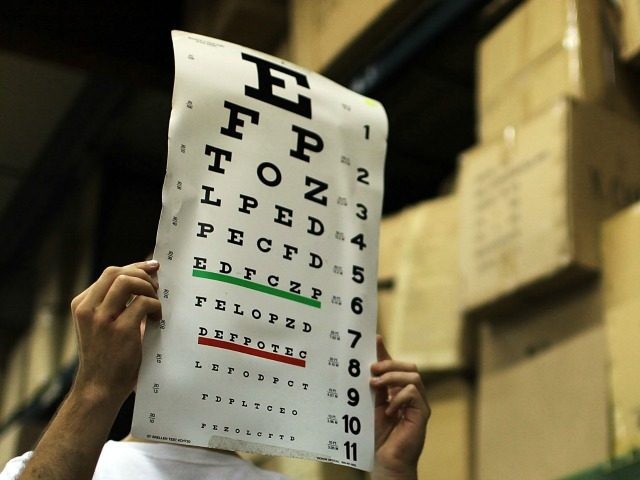Before long, perhaps, you will be able to give yourself an eye exam using your phone and even use the results of your exam to order your own glasses or contact lenses.
Scientists are increasingly concluding routine eye exams need not involve optometrists, and some even suggest this could lead to fewer problems with contacts or glasses, according to new data.
There already are a variety of apps that administer various eye tests, complete with the familiar black-on-white letters to be identified and other features. There is an app with it that allows your phone’s camera to see into and behind retinas and actually look through the eyes at the human brain.
These technologies being used in Africa, where doctors say 80 percent of the people who are blind there could be cured with proper diagnosis, technology and care.
Elsewhere, another such app, called Opternative, provides a 25-minute “appointment” with your computer and smartphone, then delivers results from board-certified ophthalmologists that have proven as accurate as traditional exams. An outfit from Israel developed what it calls 6on6, which lets users figure out their eye prescriptions through the manipulation of light on the eye.
Other countries increasingly are moving away from requiring optometrists to examine patients and issue prescriptions before patients are allowed to acquire eye glasses or contact lenses. Japan and much of Europe already have discarded the prescription requirement, and others are considering it.
But in the United States, powerful special interests are trying to take things in the other direction. A coalition of optometrists and contact lenses manufacturers are pushing Congress to adopt legislation that would strengthen the control medical professionals have over prescriptions for glasses and, especially, contact lenses.
They want to undo a law passed in 2004 that gave patients much more freedom over where and how to acquire their contact lenses. Before 2004, eye doctors did not have to provide prescriptions to patients, and many did not. They simply ordered the contact lenses their patients required, which meant more profits for the doctors for acting as middlemen and more profits for the lens makers, who could charge more to what amounted to a captive market.
The 2004 law required doctors to give patients prescriptions they could take anywhere to fill. It also said doctors must confirm or challenge prescriptions within eight working hours or the prescriptions would be assumed valid … to prevent doctors from holding onto their monopolies by simply refusing to acknowledge their own prescriptions.
This led firms, such as 1-800-CONTACTS, Walmart and others, to enter the market, and today, 43 million Americans wear contact lenses, and the industry has grown to $7 billion in annual sales.
Powerful contact lens makers and the American Optometric Association have teamed up to back the Contact Lens Customer Health Protection Act, which would again let doctors slow-roll prescriptions if customers decide to purchase lenses elsewhere as long as they wished on the theory customers will get tired of living like Mr. Magoo and come crawling back.
It also contains a forward-looking provision that would require sellers of contact lenses to provide fax and landline numbers to field doctors’ questions. Online retailers do not use faxes or landlines in most cases, but rather, they respond by email.
This is another technique doctors use to retain control over this lucrative side business that no other medical field has available – gumming up the works with questions that must be answered before prescriptions can be filled.
Eye care people and lens makers argue the new rules have led to increased eye infections among patients and other quality-related problems, but voluminous research shows this not to be the case and that no increase in infections has occurred since contacts became widely available online.
More tellingly, the contact lens firms so concerned about the health of Americans’ eyes if they are allowed to order their own contact lenses or, heaven forbid, diagnose themselves, still somehow bring themselves to sell lenses in Japan, Europe and elsewhere where prescriptions are not required.
Besides, as economist Veronique de Rugy points out, if the health of eye patients is the top concern, doctors should push for the widest variety of purchasing options.
“The best actual guarantee of consumer health is the widespread availability of affordable lenses,” de Rugy wrote. “The cheaper and more convenient it is for consumers to purchase contacts, the easier it is for them to adhere to guidelines and wear only fresh, clean lenses. The market competition thus also improves customer health.”
It’s not hard to follow the action here. Eye health professionals had a highly profitable side business selling contacts to a captive audience. The 2004 legislation opened up that business to competition, and today, more customers than ever are enjoying lower prices, more choice and better service.
The answer is not to subject consumers to higher prices and lower availability. It’s to get in and compete. The doctors still have some advantages – convenience first among them. If they can’t find a way to cooperate, they may find the U.S. becoming more amenable to the rules in place elsewhere, which would mean even less profits for them.

COMMENTS
Please let us know if you're having issues with commenting.